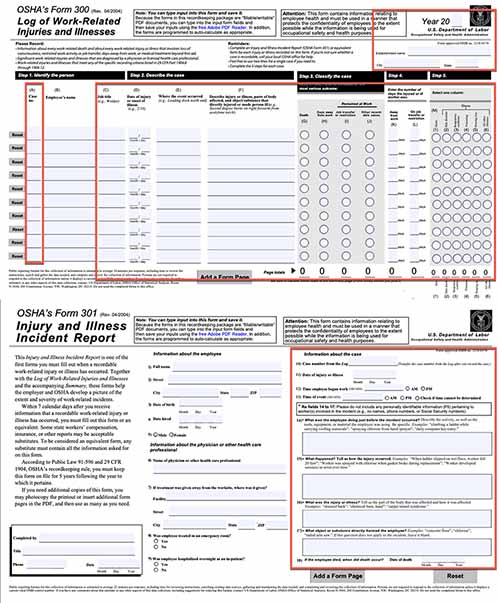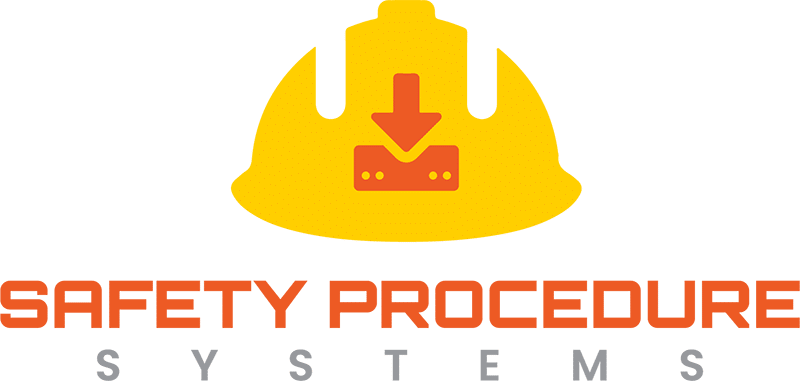On July 17, 2023, OSHA announced a new rule that requires some businesses to submit injury and illness data to OSHA once a year. For the first time ever, OSHA will require some businesses to information from OSHA Forms 300 and 301. The changes from OSHA’s new rule take effect starting January 1st, 2024.
The below sections provide additional information to help businesses make sense of this new rule.
Article Contents
Which businesses are impacted by OSHA's new reporting requirement?
This new rule affects businesses that:
- have at least one establishment with 100 or more employees
- are classified as being in high-hazard industries (aka “Designated Industries”).
Businesses in Designated Industries must submit information for each establishment that has at least 100 people employed sometime during the year.
OSHA already had a published list of industries they considered to be high-hazard. However, with this new rule, OSHA added six new industries to the Designated Industries list (see the final section below for the updated full list). OSHA now considers the following additional industries to be “high-hazard” industries:
| NAICS | Industry Name |
|---|---|
| 1133 | Logging |
| 1142 | Hunting and Trapping |
| 3379 | Other Furniture Related Product Manufacturing |
| 4239 | Miscellaneous Durable Goods Merchant Wholesalers |
| 4853 | Taxi and Limousine Service |
| 4889 | Other Support Activities for Transportation |
OSHA used a complicated set of criteria to determine which industries they classify as “high-hazard”. For example, OSHA used average rates of total recordable cases (aka TCR), average DART rates, and average fatality rates.
When do the changes under the new rule take effect?
The new requirements will take effect beginning on January 1st, 2024. OSHA will start requiring businesses to submit injury and illness data for the 2023 calendar year. However, the first reports won’t be due until March 2, 2024 (see https://www.osha.gov/injuryreporting/final-rule).
What does the new rule require businesses to submit to OSHA?
The new rule will require businesses to submit to OSHA all information logged on OSHA Forms 300 and 301 for the year, except for the following case-specific information:
- Employee Name — Column B — OSHA Form 300
- Employee Name — Field 1 — OSHA Form 301
- Employee Address — Field 2 — OSHA Form 301
- Name of Physician or Other Health Care Professional — Field 6 — OSHA Form 301
- Facility Name and Address (if treatment given away from worksite) — Field 7 — OSHA Form 301
By excluding the above details, OSHA is seeking to protect the privacy of individual employees and healthcare professionals (particularly since the data will be submitted electronically) while still obtaining safety metrics on businesses in high-risk industries.
How will businesses submit Form 300/301 information to OSHA?
Businesses that meet the criteria of OSHA’s new rule will have three options for submitting the Form 300 and 301 data to OSHA:
-
- Using a webform to submit data inside OSHA’s Injury Tracking Application
- Batch submission by uploading a .csv file to the Injury Tracking Application
- Submitting data electronically using an application programming interface (API) feed that OSHA will make available
Why is OSHA requiring businesses to submit Form 300/301 information?
OSHA states they have “determined that this [new rule] will improve worker safety and health because the collection of … data from Forms 300 and 301 will allow OSHA, employers, employees, researchers, safety consultants, and the general public to use the data in ways that will ultimately result in the reduction of occupational injuries and illnesses.
How will OSHA use the Form 300/301 data businesses report?
This is perhaps the most interesting (and controversial) part of the new rule. OSHA has said it will make some of the data it collects from businesses publicly available. More specifically, they intend to make the following information from Forms 300 and 301 available in a searchable online database:
- All entries and data collected from Form 300, except the names of employees associated with each case on Form 300 (as stated above, employee names will not be submitted).
- Fields 10 through 18 of Form 301
In addition to publishing the data, OSHA will analyze the data collected to inform their enforcement inspections, compliance assistance efforts, and workplace safety promotion efforts.
The below screen captures of Forms 300 and 301 highlight the fields that OSHA will collect and make publicly available via its online database:

Why is OSHA going to publish the Form 300/301 data they collect?
OSHA indicates they believe making the Form 300 and 301 data publicly available will yield the following benefits:
-
- Improved accuracy of occupational injury and illness reporting by businesses
- More accurate information being made available to the general public about workplace safety and work hazards
- Improved transparency of safety information in ways that benefit employers, employees, potential customers, and various governmental agencies
- The key motivation for OSHA is their belief that publishing the Form 300/301 data they collect will help make workplaces safer.
Additionally, OSHA believes that making the information they collect public will enable many different people to make more informed decisions. For example, a worker who can choose to work at two different locations for their employer could look at the safety record of each location to help make a decision.
Doesn't OSHA already require businesses to submit Form 300 information?
Yes, but technically not the same information and not from the same businesses as they are now going to require. OSHA already requires certain businesses (called “covered establishments”) to submit summary injury and illness data from OSHA Form 300A by March 2nd each year. However, this is the first time that OSHA will require businesses to submit more detailed injury and illness data from Forms 300 and 301.
How does this new rule relate to Form 300A reporting requirements?
OSHA’s rules requiring establishments to report Form 300A information are completely separate from their new rules for Form 300 and 301 reporting. Furthermore, OSHA’s new rule does not change which establishments are required to report Form 300A information.
Accordingly, establishments currently required to report Form 300A data should continue to do so. Separately, they should determine whether they will now need to report Form 300 and 301 information.
Could more industries be added to the Designated Industries list?
OSHA will not add more industries for now, but they could again in the future. They said if they determine “injury and illness rates in industries that are not included [in the High-Hazard Industries list] are rising, then OSHA may consider adding those industries to [the list].” (Final Rule Full Text, pg. 22) They also said they believe it’s better not to update the list regularly (see next section).
Could industries be removed from the Designated Industries list?
It’s possible that OSHA will remove industries from the Designated Industries list, but based on what they’ve said, it’s not very likely. In the new rule, they say the following:
"if OSHA's ongoing analyses of injury and illness rates show a decrease in injuries and illnesses in particular industries included [on the list], then OSHA may consider removing those industries from [the list]."
Final Rule Full Text, pg. 22 Tweet
However, OSHA also confirmed their stance is that the list of industries “should not be updated on a regular basis.”
Full List of Designated Industries
The table below represents the full list of industries OSHA classifies as high-hazard for purposes of the Form 300 and 301 reporting requirements:
Additional Resources
For more information about the requirements of OSHA’s new rule, see the below resources:
-
- Full Text of the Final Rule — Improve Tracking of Workplace Injuries and Illnesses (PDF): https://www.govinfo.gov/content/pkg/FR-2023-07-21/pdf/2023-15091.pdf
- OSHA News Release for New Rule: https://www.osha.gov/news/newsreleases/national/07172023
- OSHA New Requirements Info — Final Rule to Improve Tracking: https://www.osha.gov/injuryreporting/final-rule
- OSHA Injury Tracking Application: https://www.osha.gov/injuryreporting/ita/
- OSHA Appendix B to Subpart E of Part 1904 (Designated Industries list): https://www.osha.gov/laws-regs/regulations/standardnumber/1904/1904SubpartEAppB



